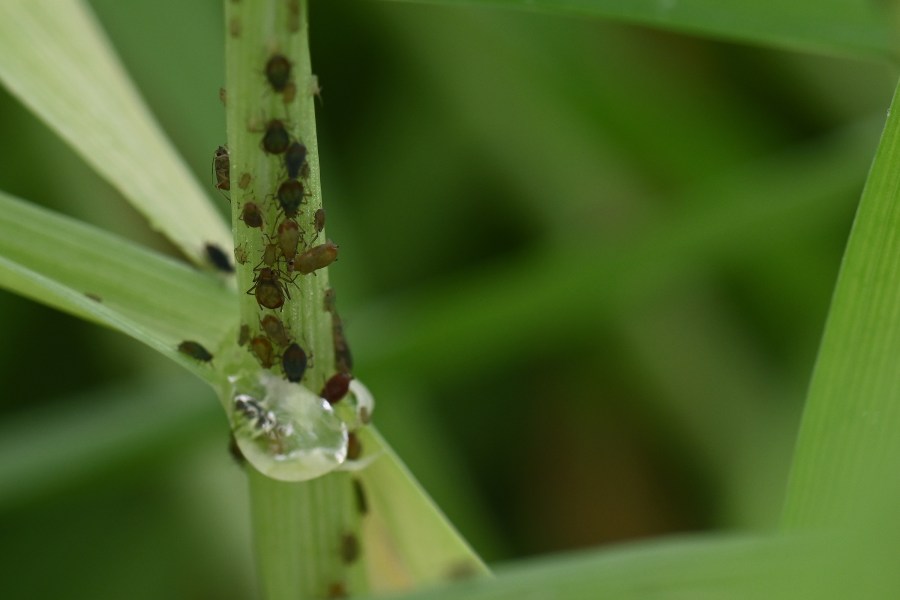Early sown cereal crops are at increasing risk of BYDV transmission from infective aphids, as mild conditions continue to encourage pest movement into crops.
This is according to advice from Syngenta, who says its BYDV Assist app is showing that the 170 day degree (DD) trigger point for tackling pests is impending.
Proactive management of the situation is key, and for Agrii R&D Manager, Jim Carswell, receiving an early warning from the app, at 145 DD, has been invaluable to give time to inspect crops for aphid activity, and to schedule spraying for timely intervention in the high-risk situations.
Jim says that with drilling starting in early September, particularly on fields with low grassweed pressure, crops have been exposed to infection risk for a prolonged period. National insect monitoring has indicated that while the numbers of aphids being caught is relatively low, compared with previous seasons, the proportion carrying BYDV and acting as potential vectors is higher.
“Once there are foci of infection in the crop, it can have very serious consequences for yield,” he warns. “With current crop values you can’t afford to take a risk. Using the app gives a valuable guide of where and when to be prioritising attention on high-risk fields.”
Protecting potential
With most crops in his Yorkshire region looking exceptionally strong and already well tillered, Jim advocates protecting the potential of higher grain prices will be a priority. “However, for effective stewardship of insecticides, we only want to be spraying where there is a real agronomic need.
“The BYDV Assist app really helps to focus attention on fields at risk at the right time and be more precise in how we use the most effective treatments available. Having the science behind the decision making gives extra assurance for growers.”
Syngenta’s BYDV Assist app is available free for all growers and agronomists. Users simply input the location of a field and the date of crop emergence; using sophisticated local weather data the app automatically calculates when the critical 170 DD, that research has shown indicates high risk of aphid activity to transmit the BYDV infection, is reached.
Furthermore, the app provides a warning at 145 DD, to enable field inspections and assessment of specific aphid threats. When a Hallmark Zeon (lambda-cyhalothrin) treatment is applied, users can reset the trigger to 0 DD for a week, before the app restarts the risk assessment calculation. Multiple fields across any area can be entered into the app.
Advice for minimising the incidence of BYDV includes destroying any green bridge between crops; later drilling when the threat of aphids is typically declining and sowing higher seed rates for stronger compensatory growth. Direct drilling has also been shown to preserve higher beneficial predator populations.
Treatment options
Syngenta advocates that where an insecticide is required to target aphid thresholds, Hallmark Zeon has consistently provided the most consistent results. The main vectors of BYDV are the bird cherry-oat aphid; grain aphid and rose-grain aphid. Hallmark Zeon should always be applied at full label rate to minimise the risk of insecticide resistance among aphid populations.
Ed Flint, Syngenta digital ag deployment manager, adds that BYDV Assist includes an application guide to help achieve optimum timing when treatment is warranted. “Where the app is used in conjunction with Spray Assist, operators can ensure they are using the very best practice and application techniques that are vital for the most effective results and stewardship.
“Syngenta is committed to developing digital agronomy tools that will aid all agronomy decisions and help growers get better results from every application.”
BYDV Assist is available to download now from the App Store and Google Play.




